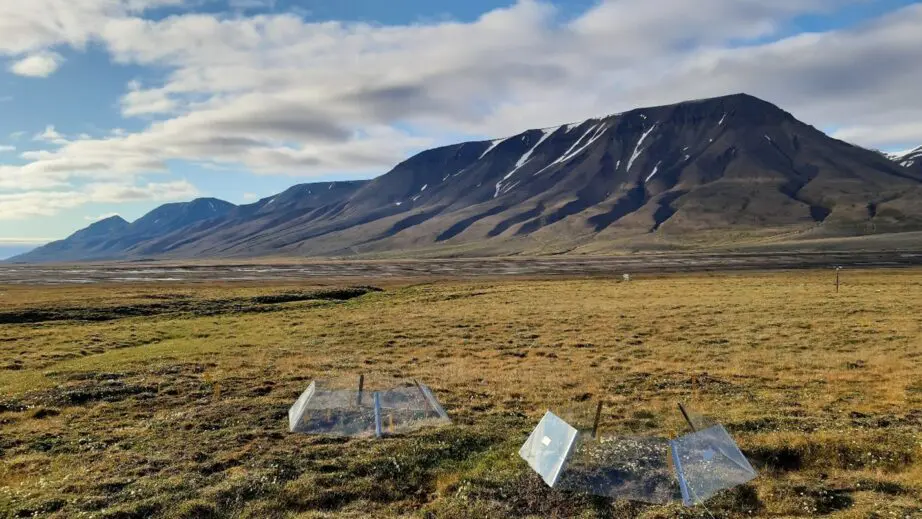Vegetation and active layer depth
In this project, we aim to understand how warming and moss removal will affect soil temperature and permafrost in the High Arctic.
active

Effects of plant communities on permafrost thaw are studied in the long-term monitoring project “Vegetation and active layer depth”. The experiment was established in Adventdalen in 2021. Treatments include experimental warming from spring until autumn and removal of the moss layer. Photo: Simone I. Lang.
In the Arctic, climate warming is a major factor in shaping plant communities. Mosses are predicted to decrease while higher plants are thought to increase in Arctic regions. At the same time, reindeer and geese have been increasing in numbers during the past years, also causing a decline in mosses due to grazing. Mosses are known to insulate the ground. Thus, a reduction in moss cover or thickness may lead to increased permafrost thaw.
In this project, we aim therefore to understand how both warming and moss removal will affect soil temperatures and permafrost in the High Arctic.
In 2020, we have set up a field experiment in the High Arctic tundra on Svalbard in two different plant communities. Treatments include moss removal and warming from spring to autumn by using Open Top Chambers.
The project will run from 2020 to 2030.
Staff members:
External members:
Virve Ravolainen (NP)
Åshild Pedersen (NP)

